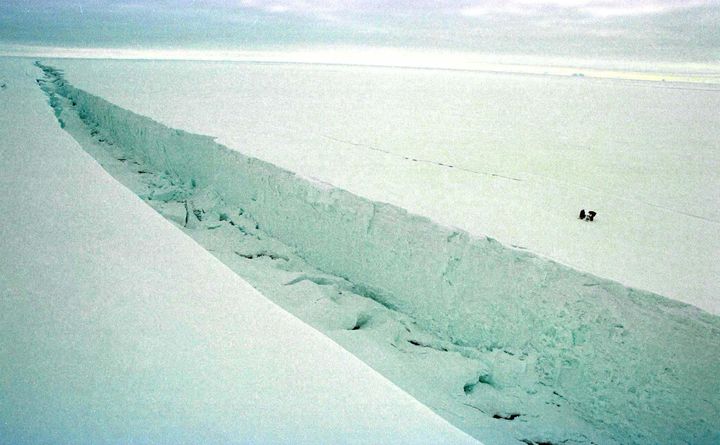Aerial footage of a vast rift in an Antarctic ice shelf has revealed how perilously close it is to calving.
Just 20km of ice holds together the Larsen C ice shelf, whose fissure spans more than 175km and in parts is wider than the Shard is high.
When it eventually breaks away, the ice shelf will form a vast iceberg a quarter the size of Wales, exposing the rest of the shelf to the risk of fracturing.
If that happens, the grounded ice propped up by the shelf could also collapse, contributing to a global sea level rise of 10 cm.

The University of Swansea’s Professor Adrian Luckman, told BBC News in January he’d be amazed if the shelf didn’t break up in the next few months.
But it’s not clear how the calving event will affect the rest of the shelf.
Dr Paul Holland, ice and ocean modeller at British Antarctic Survey (BAS), said in a statement:
“Iceberg calving is a normal part of the glacier life cycle, and there is every chance that [the rest of] Larsen C will remain stable and this ice will regrow.
“However, it is also possible that this iceberg calving will leave Larsen C in an unstable configuration. If that happens, further iceberg calving could cause a retreat of Larsen C.
“We won’t be able to tell whether Larsen C is unstable until the iceberg has calved and we are able to understand the behaviour of the remaining ice.
“The stability of ice shelves is important because they resist the flow of the grounded ice inland. After the collapse of Larsen B, its tributary glaciers accelerated, contributing to sea-level rise.”
The researchers said they didn’t have enough information to ascertain whether the fissure is an effect of climate change or not.
But BAS said there was good scientific evidence that climate change had caused thinning of the ice shelf.
